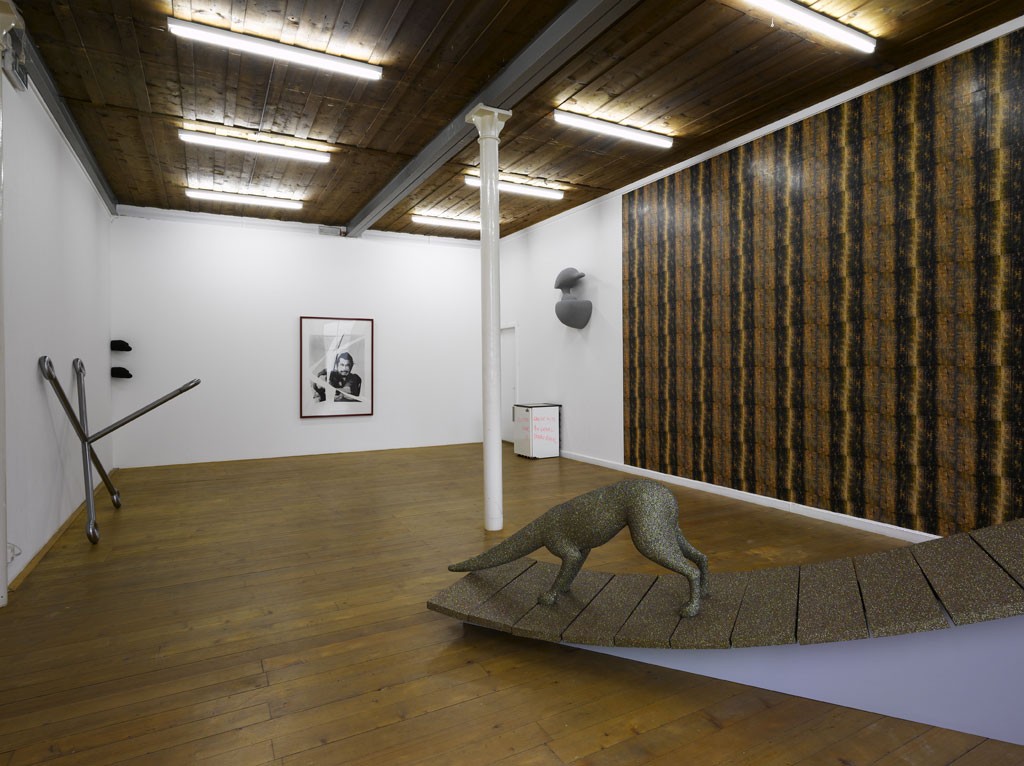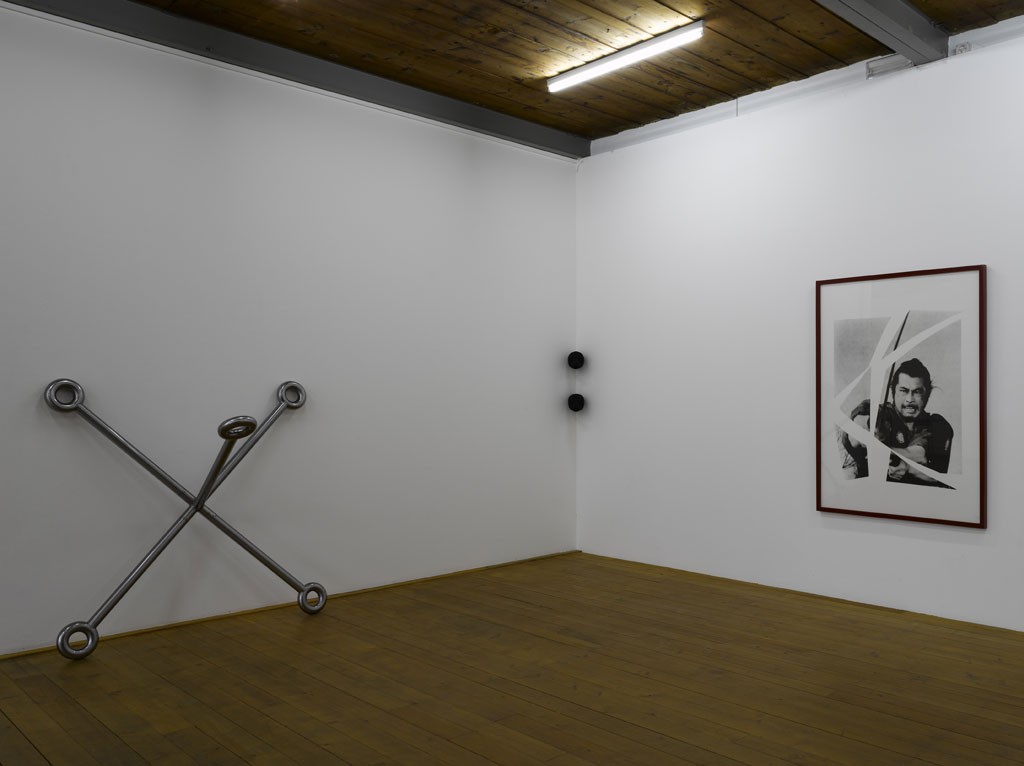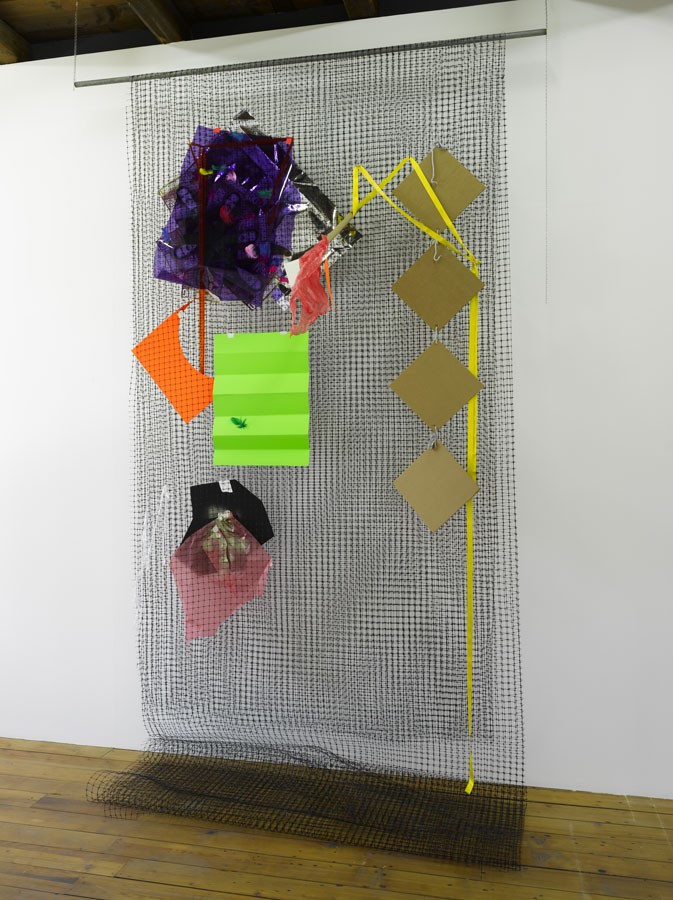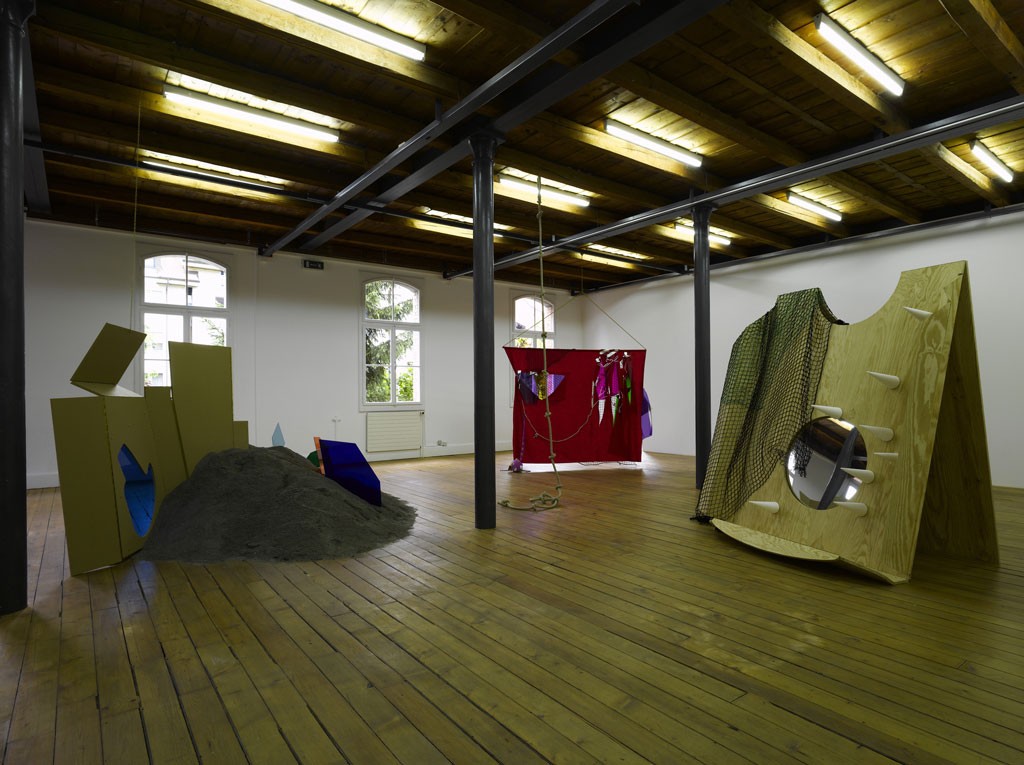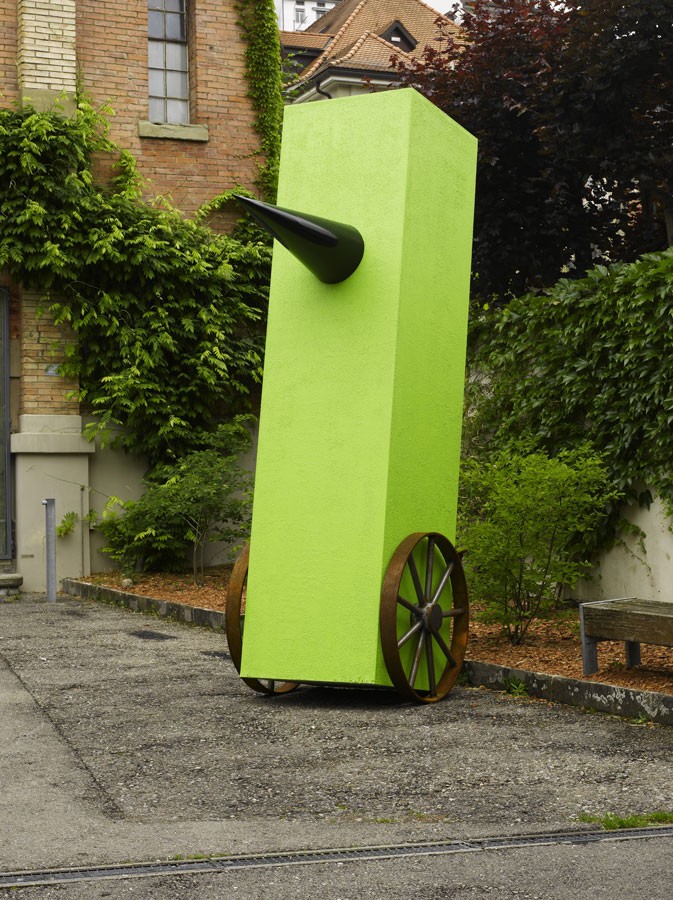Chausse-trappes
Fri art
Fribourg (Switzerland)
June 1st — August 17th, 2008
« Ce fut à la bataille de Bannockburn en Écosse (1315) qu’on se servit avec succès des Chausse-trappes. À la tête de ses montagnards écossais, Malcolm Drummond soutint le choc de la cavalerie anglaise, la culbuta et l’obligea de s’engager sur un terrain que, par ses conseils, on avait semé de Chausse-trappes. (...) La maison de Drummond obtint en cette circonstance, par concession royale, le droit d’ajouter à ses armoiries une terrasse semée de Chausse-trappes, en mémoire de la bataille de Bannockburn. Elle prit pour devise ces mots celtiques : GangWarily (marche avec prudence), cri que poussèrent ironiquement les montagnards écossais, quand ils virent les cavaliers anglais, couverts de leurs lourdes armures, s’élancer au milieu des Chausse-trappes.»
Revue historique de la noblesse, publiée par André Borel d’Hauterive, t. ii, p. 79.
Not to be where you are expected, this seems to be Delphine Coindet’s motto; and for this artist who recently moved to Lausanne, a key figure in the young French art scene, it is probably beneficial as well as great fun to get away from these categorizations that latch onto nothing but the “virtual” dimension to her sculptures and the unreality of their smooth surfaces.
In connection with Delphine Coindet, Lili Reynaud-Dewar stressed her “chronic but discreet instability (…), characteristic of a fanciful type of sensibility” as “a postulate from which freedom, pleasure and style are constructed”. Above and beyond an elegant casualness, this artist does indeed have a definite tendency towards the eccentric and transgression, and this blossoms with undisguised pleasure in her recent works.
Everything seems to indicate that Delphine Coindet has recently embarked on a vast enterprise recycling forms that have been characteristic of her own repertoire. Recurring motifs have remained: an unconcealed taste for theatricality, or even dramatization, a vocabulary whose glamour is slightly fake and includes feathers, little bells and snoods, bright, saturated colours, and a certain form of aggressiveness. As for the means, they seem to have been transferred from an aeronautics agency to a needlework shop. Rather than a disavowal of a recent past, this development should be seen as an extension of the various rough treatments that could previously be read into the tensions already existing between materials or in the actual arrangement of the objects. There are other clues hinting at this development and notably the recent emergence of felt drawings, referring back more to childhood and its brutality than to the immaculate renderings of decidedly too polite high tech industry to which the artist’s preparatory schemas appear to belong.
There are two parts to the show, one in the form of a solo exhibition, the other being a presentation of four artists brought together by Delphine Coindet, not in any theme-related order, but rather as the photograph of a set of converging correspondences, filiations or influences being played out in the artist’s immediate environment. This logic of exchange comes naturally to Delphine Coindet, who stresses that you “rarely construct things on your own”. Whether it be well tested collaboration as in the case of Vincent Beaurin, or a more distant influence in that of Sarah Charlesworth, the works brought
together here offer a repertory of gestures and methods, intentions and contexts that can be read separately or made to resonate with each other and with the first part of this show.
Corinne Charpentier
